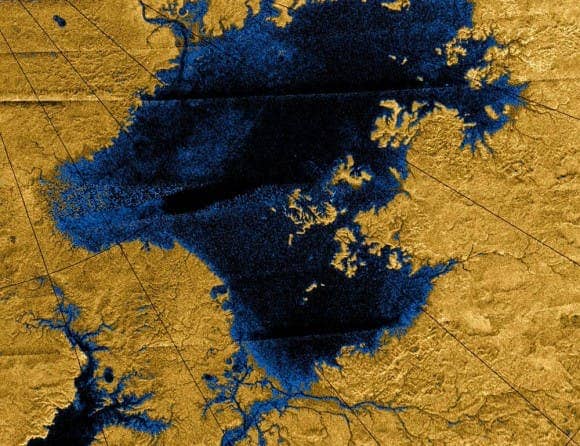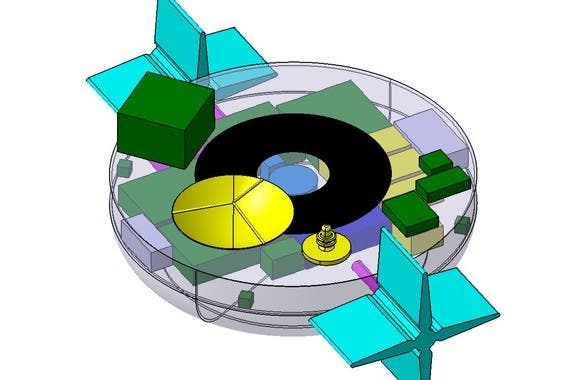
NASA’s Cassini mission show river networks draining into lakes in Titan’s north polar region. (c) NASA/JPL/USGS
Rovers, like Curiosity, have been great for gathering samples and studying the terrain and atmosphere of distant worlds, but what about environments less favorable to wheeled machines? An interesting concept has been unveiled recently, in which scientists propose landing a sort of robotic boat on Titan’s largest methane lake, in order to have a physical probe on its surface.
Titan is the largest of Saturn’s more than 60 natural satellites – larger than Mercury itself. For a long time, thanks to its thick atmosphere, astronomers have viewed Titan as a worthy candidate for harboring extraterrestrial life, despite its freezing cold surface temperatures, as low as -289°F. Its significant source of liquids, however, might allow for microbial life to foster, as Titan’s covered in a slew of seas, lakes and rivers of methane.
Previously in 2005, the European Space Agency Huygens probe touchdown on land on Titan and transmitted data for a few hours before going dark, confirming satellite observations of liquid hydrocarbon deposits on the moon’s surface. Now, a joint project of SENER and the Centro de Astrobiología in Madrid, Spain called Titan Lake In-situ Sampling Propelled Explorer (TALISE) seeks to provide a viable option for exploring Titan’s fascinating methane lakes, and search for life. The concept itself is simple, land a boat propelled by wheels, paddles, or screws that would float around in the largest lake on the surface of Titan called Ligeia Mare. After splashing down, TALISE would make its way to the coast over the course of a trip lasting six months to a year.
“The main innovation in TALISE is the propulsion system,” Igone Urdampilleta of Spain-based private engineering firm SENER, a member of the TALISE team, said in a statement. “This allows the probe to move, under control, from the landing site in the lake, to the closest shore. The displacement capability would achieve the obtaining of liquid and solid samples from several scientific interesting locations on Titan’s surface such as the landing place, along the route towards the shore and finally at the shoreline.”

Proposed concept for the TALISE mission shows a boat propelled by paddles to travel though Titan’s largest lake. (c) SENER
It’s likely that the TALISE will never see the light of day, even here on Earth, however it’s serves as an interesting concept for future Titan missions, if it gets picked up by a major space agency. The scientists involved in the project proposed their concept on Sept. 27 at the European Planetary Science Congress in Madrid.
via space.com









